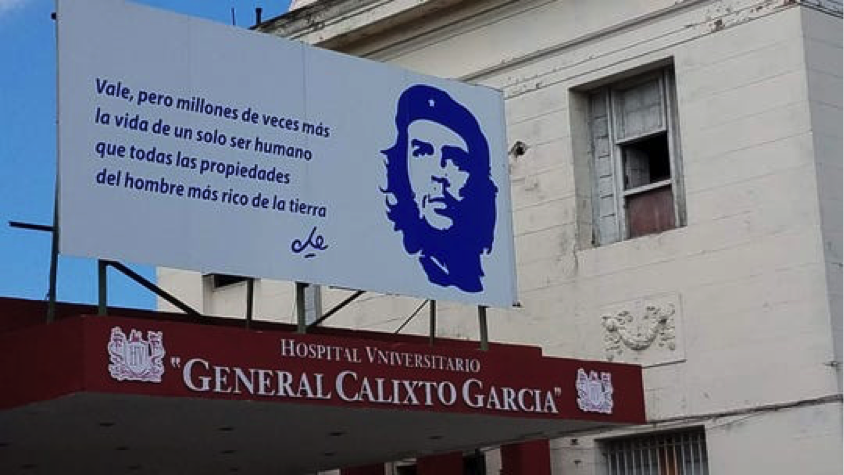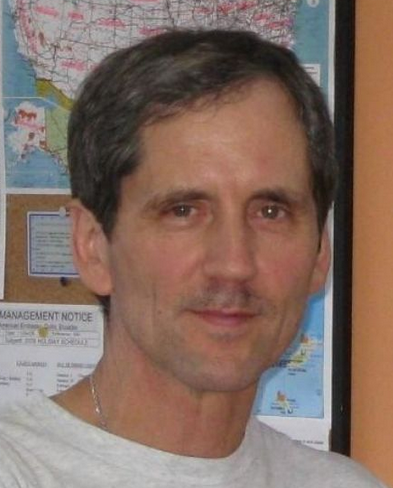Jazz and health in Havana – a unique opportunity for understanding Cuba’s focus on prevention
By Mark Mahoney
I recently had the opportunity to travel with a group of musicians (who played at a number of venues in Havana) and other interested folks with a focus on attending the yearly International Jazz Festival in Cuba. 
This was a unique opportunity to experience both this island’s culture through residing with Cuban families as well as savoring some quality jazz performances.
I was able to visit the University of Havana’s largest hospital, General Calixto Garcia, and had the opportunity to speak with a student who was completing a year of social service prior to beginning studies to become a medical doctor the following year.
I hope to stay in touch with him as he progresses through his medical school studies and gain some insight into how it evolves through his perceptions. I also had a brief discussion with a couple of faculty members from the Medical School with relation to health care.
My intent in this column is to provide a description of the infrastructure and aims of the Cuban health care system over time with a focus on prevention. Although there are definitely relevant issues affecting health care access in Cuba due, in large part, to economic disparities, the model is one which possesses many positive characteristics with its emphasis on community.
 The evolving nature of health care
The evolving nature of health care
The original establishment of the Rural Medical Services occurred in the 1960s with the objective of improving medical coverage and services in rural areas. The 1979 Declaration of Alma-Ata lent support for the establishment of multi-specialty family polyclinics, which focused on providing services within communities across Cuba. By the year 1990, this program had reached 95 percent of the Cuban population.
Community and disease prevention
Cuba has been able to maintain its high-quality health care services by centering the community and focusing on disease prevention. Healthcare in Cuba has a social aspect to it, particularly in the community and the family.
In 1984, Cuba shifted its focus to the community by integrating healthcare in the community and in tight-knit neighborhoods instead of a disconnected hospital system outside of the community and its reach.
One way the health care system in Cuba maintains this family-oriented health care is by requiring all medical students to complete a family practice residency.
Ultimately, some of the takeaways from the Cuban model include the following:
- A focus on providing educational opportunities for students to enter the medical field
- Addressing disease prevention rather than disease treatment
- Centering the health care system on the community and increasing access to more impacted neighborhoods.
A proactive structural approach
The focus of the Cuban health care approach is in providing preventative medical services, nationwide coverage, and access to treatment. The preventative aspect of medical care has allowed Cuba to climb to the top of the world when it comes to vaccination and life expectancy. According to the World Bank, as of 2016, Cuba’s life expectancy is about 79 years while the U.S. is at about 78 years.
The U.S. is capable of establishing single-payer systems if it were to bring healthcare clinics to the communities that are most impacted by disease. The U.S. spends about $9,403 dollars on health care while it costs about $813 dollars per person in Cuba.
Much of the U.S. health care system has industrialized health care and transformed it into a multi-billion dollar industry focused on profit rather than patient care. It would also benefit from investing in providing access to education for medical students and provide incentives for involvement in community-focused health care. The U.S. is one of a few developed countries that still haven’t invested in a universal healthcare system.

Entrance to the Havana University Main Hospital during a visit to Cuba in January 2020. (Photo: Mark Mahoney)
Issues in the Cuban health care system
The Cuban health care model has its own problems. With the somewhat unstable political and economic system, the health care system has been infiltrated by the black market with access to more off-market drugs and medicines, like painkillers. Another problem is the lack of well-paying opportunities in the health care sector.
The substitute that the Cuban government provides is more educational opportunities and foreign aid work abroad. However, it’s important to keep in mind that the Cuban health care system cannot be simply compared to that of the United States because of the varying political contexts they exist in.
The focus of the column is not to compare systems of health care provision but rather to highlight some characteristics of Cuba’s community-based approach to health care. As an individual public health specialist, the characteristic inherent in a model focusing on health promotion/disease prevention such as in Cuba has the potential for producing a healthier lifestyle and a subsequent improved quality of life.
Thanks to the Berkeley Political Review for some historical information as well as an explanation of some of the salient features of Cuba’s approach to health care with a focus on community and disease prevention with some additional notes on the U.S. approach.
Additional resources
Go to the following link for a description of Cuba’s primary health care initiative with a focus on community-based polyclinics from the 2008 Bulletin of the World Health Organization.
https://www.who.int/bulletin/volumes/86/5/08-030508/en /
An additional reference published by the Library of Medicine, National Institutes of Health (NIH) which focuses on research within the Cuban health care system based on community needs can be accessed at:
https://www.ncbi.nlm.nih.gov/pmc/articles/PMC3464859/
_______________________________________

Mark Mahoney, Ph.D.
Mark Mahoney, Ph.D. served as a Peace Corps Volunteer for over four (4) years in Latin America, has been a Registered Dietitian/Nutritionist (R.D.N.) for over 35 years and completed graduate studies in Public Health at Columbia University. He can be reached at marqos69@hotmail.com.





















